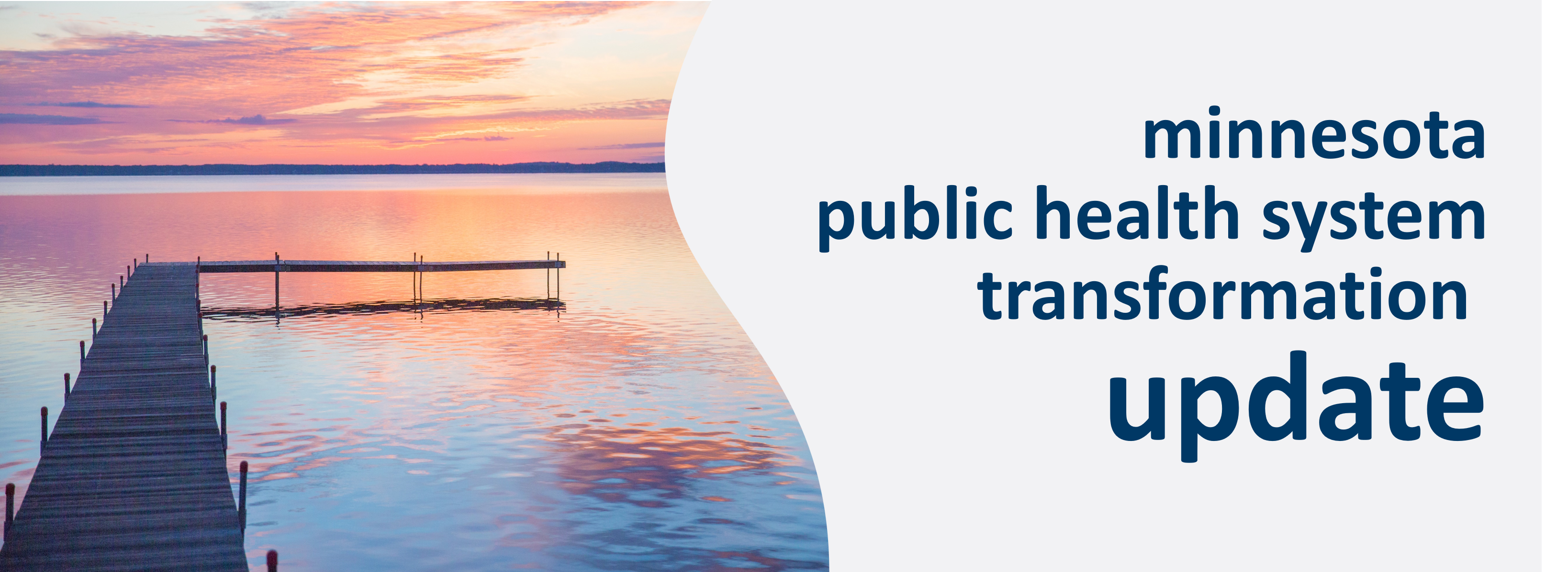Transforming Minnesota's Public Health System
- Home: System Transformation
- About This Work
- Framework of Foundational Responsibilities
- Definitions, Criteria, and Standards for Fulfillment
- Joint Leadership Team
- Minn. Infrastructure Fund and Local Innovation Projects
- Governance Groups and Communities of Practice
- Data Modernization
- Regional Data Models
- Tribal Public Health Capacity and Infrastructure
- FPHR Grant: Funding for Foundational Responsibilities
- Reports, Fact Sheets, Resources
- Newsletter
- Message Toolkit
Related Sites
Contact Info

Public Health System Transformation Update Newsletter
May 2024 | View all system transformation newsletters
A seamless public health system: What does that mean?
We envision a seamless, responsive, publicly-supported public health system that works closely with the community to ensure healthy, safe, and vibrant communities. This system of state, local, and tribal health departments will help Minnesotans be healthy regardless of where they live. – Joint Leadership Team vision
When we dig into the Joint Leadership Team vision above, what do "seamless," "responsive," and "publicly-supported" mean? What might they look like in a transformed and strengthened governmental public health system in Minnesota?
A seamless public health system
A seamless public health system works cohesively: across jurisdictions, levels of government, geographies, sectors, and more. Where you live shouldn’t determine your level of public health protection, and every agency that helps shape opportunities for population health can work together to do so. People, diseases, air, water, and soil aren’t bound within jurisdictions—neither is public health.
What would this mean?
- "Everyone’s on the same page—we're not talking past each other."
- "We have clear roles and responsibilities for who does what, and mechanisms to coordinate, communicate, and maintain partnerships."
- "We're highly collaborative."
- "I’m not feeling alone out in the 'public health woods.'"
- "It's easier for partners to work together—the rules for public health don't change when we cross jurisdictional boundaries."
What might this look like?
- "Hub" service models, like a one-stop shop for food inspection so customers don't have to interface with many entities.
- Standardized ways of sharing data across public health partners; data flows easily through the system and partners can use it to inform decisions.
- Strong local relationships between government and community, so partners don’t have to "leapfrog" their localities to find someone they know or trust.
Related
- A responsive public health system: What does that mean? (June 2024)
- A publicly-supported public health system: What does that mean? (September 2024)